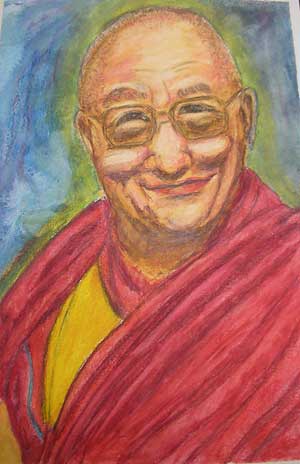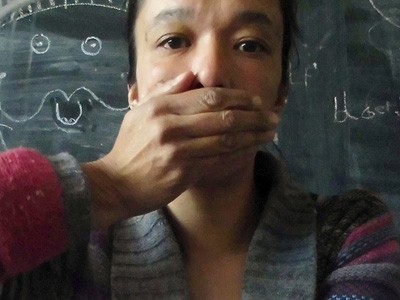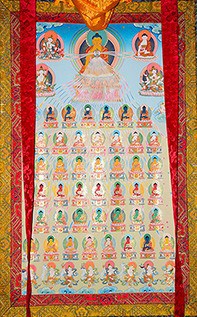Tibetan Lama visits incarcerated people

On December 27, 2006, Khensur Jampa Tegchog Rinpoche, former Abbot of Sera Je Monastery in Southern India, gave a teaching to a large gathering of members of Gateless Sangha, the Buddhist group at Airway Heights Correctional Center in Spokane, Washington.
Khensur Jampa Tegchog Rinpoche was in the Spokane area, having just completed a ten-day teaching at Sravasti Abbey. He was accompanied by Venerable Thubten Chodron, head of the Abbey, and several ordained and lay students as well as Venerable Stephen Carlier, Rinpoche’s interpreter. Pryamitra, volunteer sponsor, assisted in making the visit possible.
Rinpoche began by conveying his delight in being able to visit them and that his impression was that conditions at the prison seemed conducive to Buddhist practice. The surroundings were clean and orderly, the men well-fed, warmly clothed, educated, and having time to practice. They have time to practice, free from the stresses of family life and career. He then spoke of the terrible times in Tibet when the Chinese invaded. Thousands of monks and nuns as well as villagers were imprisoned, starved, and worked too hard. Many died daily from this abuse. However, after those who survived were released, they often said that their practice had become very strong while imprisoned and now they sought conditions where they could continue intensive practice as before.
Rinpoche encouraged the men to think of their incarceration as being on retreat, to study hard, and to treat others as their brothers. This will bring greater peace of mind and more harmony. Rinpoche stated, “Some of you have made mistakes, some of you may have been falsely accused. However, think that you are now extinguishing negative karma created in this or previous lives and be grateful that you will not have to experience it ripening as a horrible rebirth. Suffering is the nature of cyclic existence, so it’s important to practice the Dharma.”
Here is a sample of questions the incarcerated people asked Rinpoche:
Incarcerated person: What makes a person a Buddhist? What do Buddhists do?
Rinpoche: A Buddhist is a person who goes within to develop a peaceful mind, love and compassion for others. You may see persons counting mantras on their rosary beads or meditating, but the essence is to transform the mind.
Incarcerated person: How do we deal with disharmony within the Buddhist group?
Rinpoche: The antidote to anger is patience. Think of a person hitting you with a stick. Would you be angry with the stick? No, because the person is making it move. But what is making the person move? At that moment, the person is under the control of the mental afflictions. It is those mental afflictions that are the problem, not the person. Thinking in this way, let go of your anger by practicing patience.
To conclude the teaching, we chanted the mantra Om Mane Padme Hum together. Everyone was delighted, and many incarcerated people gathered to speak with Khensur Rinpoche and the other visitors.


